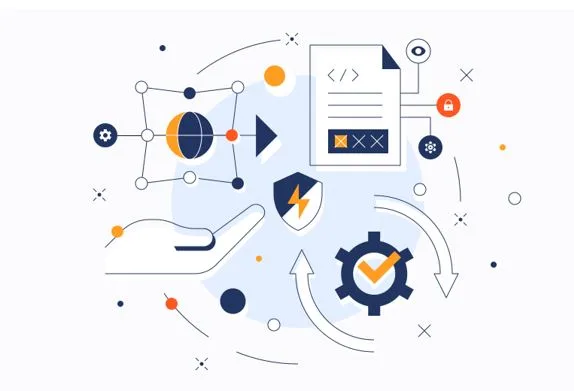Digital Payments, BNPL & the Rise of Invisible Debt in Australia
You’ve probably done it yourself. A quick tap of the phone to buy lunch, a few clicks to order a new outfit on Afterpay, or splitting the cost of concert tickets over four easy payments. It feels harmless in the moment. After all, you’re not spending “real” money, just using the convenient payment options that everyone else is using too.
But as digital payments become part of daily life in Australia, something is quietly changing beneath the surface. A new kind of debt is creeping up on millions of people, especially younger Australians. It’s called invisible debt, and for many, it’s starting to cause some very real financial stress.
What Exactly Is Invisible Debt?
Invisible debt isn’t a term you’ll find in your bank statement, but it’s something that affects nearly every smartphone user. It’s the kind of money we owe without fully realising it. Buy Now Pay Later (BNPL) services like Afterpay, Zip, and Klarna make it easy to buy now and forget about the payments until later. Add in subscription renewals, gym memberships, delivery apps, and digital gaming purchases, and you’ve got layers of small recurring payments that can quietly add up.
A recent ASIC report revealed that millions of Australians use BNPL regularly, and more than one in five admit to missing payments at least once. Many people don’t see these transactions as “real debt” because the amounts seem small. Yet those micro-payments can turn into hundreds of dollars a month without much notice.
Why Digital Payments Feel Less Real
There’s a psychological reason digital spending feels painless. When you tap your phone, you don’t see cash leaving your wallet. That lack of physical exchange makes it easier to overspend.
Marketing doesn’t help either. BNPL services use language like “interest-free,” “pay later,” and “just four easy payments.” It feels light and manageable, but that’s exactly the point. The design removes friction, making it effortless to spend and easy to forget.
For many Australians, it’s not that they’re being reckless. It’s that they’re being human in a system designed for convenience. Each small payment feels insignificant on its own, but the cumulative effect can be huge.
The BNPL Boom in Australia
Australia was one of the first countries to fully embrace BNPL technology. It’s estimated that over 7 million Australians now use these services, and the total value of BNPL transactions has grown into the billions. For younger shoppers, BNPL is as normal as tapping a debit card.
But this rise in digital finance has caught the attention of regulators. ASIC and consumer groups have raised concerns about affordability checks and the potential for vulnerable consumers to fall into financial hardship. Many BNPL users are students, casual workers, or gig economy earners whose income fluctuates. When payday is delayed or unexpected costs pop up, those automatic deductions can push accounts into overdraft or trigger late fees.
Invisible debt doesn’t always start with bad decisions. Often, it begins with optimism and easy access to credit.
When Invisible Debt Becomes Real
Sooner or later, missed payments stop being invisible. BNPL companies might hand accounts to debt collection agencies once repayments fall too far behind, or overdue subscription bills might end up in collections.
According to Bell Mercantile a leading debt collection agency based in Melbourne, Australia, there has been a noticeable rise in small-scale BNPL digital debts over the past few years. “We’re seeing more cases where individuals have multiple BNPL accounts or app-based subscriptions that spiral out of control,” says a company spokesperson. “Most people don’t even realise they’ve fallen behind until it becomes a serious issue.”
The company advises consumers to stay aware of every recurring charge linked to their accounts and to seek help early if things start feeling unmanageable. A quick call to a professional can often prevent a minor issue from turning into a credit problem.
Breaking the Cycle and Taking Control
The good news is that invisible debt can be managed with a few simple habits.
- Track your subscriptions. Use your bank’s app or a budgeting tool to list every recurring payment.
- Limit Buy Now Pay Later accounts. Stick to one platform and only use it when you know the repayments are covered.
- Set reminders for payment dates. A simple calendar alert can prevent missed deadlines.
- Review your statements regularly. Look for charges you forgot about or services you no longer use.
If you’re already feeling overwhelmed, reaching out for help is a smart move. Seeking support early shows financial maturity, not failure.
A Shift in Spending Culture
Digital convenience has changed how Australians view money. The physical act of spending has been replaced by seamless, almost invisible transactions. For some, that means freedom and flexibility. For others, it means a slow drift into untracked debt.
As more of life moves online, awareness is the new currency of control. Invisible debt only has power when it goes unnoticed. By staying alert, tracking expenses, and being realistic about payment plans, Australians can enjoy the benefits of digital finance without the hidden costs.
Final Thoughts
The future of payments in Australia is fast, contactless, and digital. That isn’t a bad thing, but it does mean we need to pay closer attention to where our money goes. Invisible debt doesn’t happen overnight, but awareness can stop it before it becomes a problem.
Convenience should never come at the cost of financial stability. Whether you’re managing a few overdue BNPL payments or trying to stay on top of subscriptions, taking small steps now can save a lot of stress later.
So next time you tap to pay, take a second to check what else you might be paying for. Your future self will thank you.





